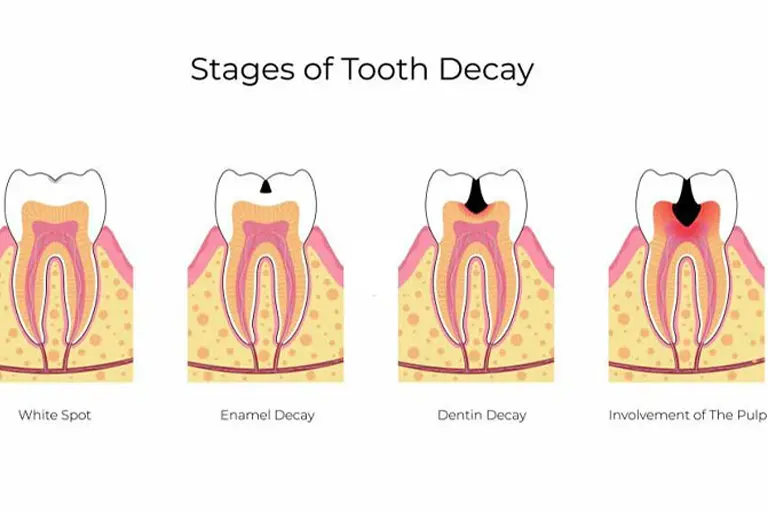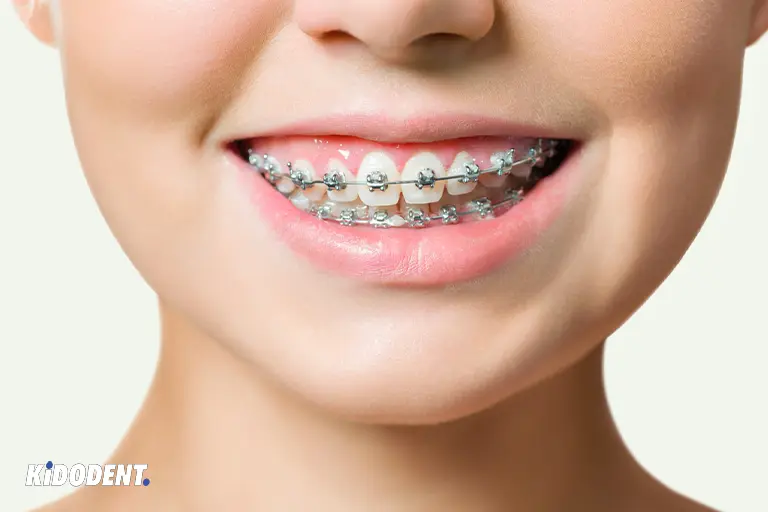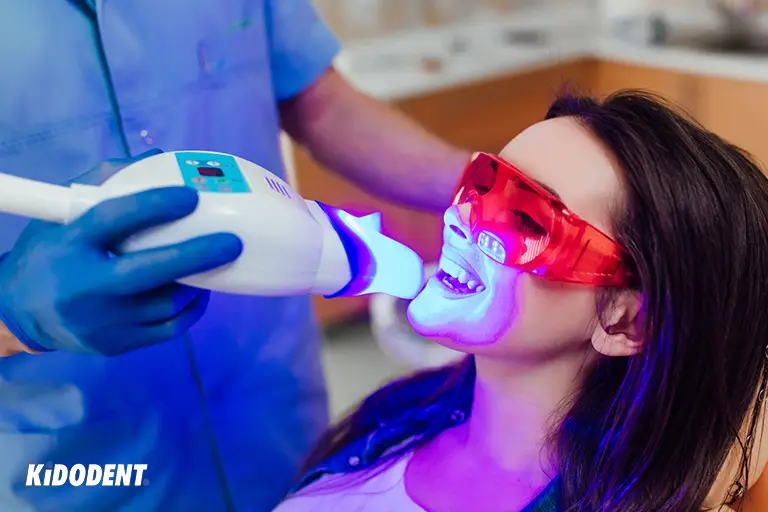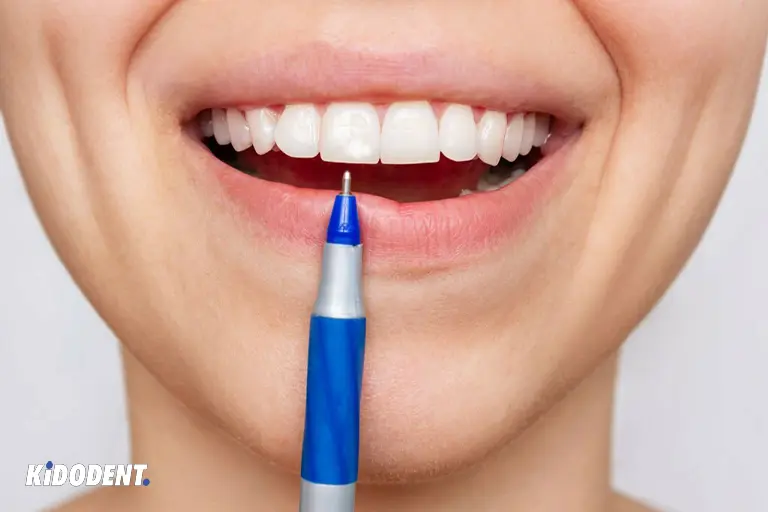White spots, or white spot lesions (WSLs), are unsightly white marks or patches of white areas that appear on teeth, making esthetic of your teeth a concern. They impact the smile from having a shiny and beautiful look, especially the severe ones which can be more visible.
White spots are mainly the symptom of the early stage of tooth decay. This is an alarming sign to care more for your oral health and seek treatment before the cavity stage. Enamel demineralization due to poor oral hygiene and an acidic/sugary diet are primary factors when tooth decay is the culprit.
White spots on teeth are especially more noticeable in people wearing braces. They can be seen when braces are removed around the teeth that brackets were bonded.
However, white spots do develop because of other reasons. This type can persist to pits, grooves, and severe forms of discolorations. Dental defects like fluorosis (due to ingestion of too much fluoride) and enamel hypoplasia (enamel underdevelopment) are some common causes of these unusual white spots.
In this article, we get down to the reasons behind white spots on you or your child’s teeth, the best treatments available to remove them, and some simple prevention ways.
What causes white spots on teeth?
Common causes of white spots include:
Demineralization
Demineralization, or the loss of minerals, is the leading cause of white spots on teeth. This form of white spots is more prevalent and is the sign of early stages of tooth decay. Why does it happen? Poor oral hygiene, plaque acids, a diet high in sugar or acids, and low saliva in your mouth are the common risk factors of tooth decay and thus the appearance of white spot lesions.

And how does it occur? Enamel is the outer and hardest layer of teeth, but it cannot be safe against decay and cavities. When teeth come under attack by acids, which are released by bacterial plaque that builds up on teeth or from the acidic diet, enamel begins to demineralize or decalcify, losing its mineral portions.
Chalky white spots appear on affected areas of teeth. If not treated, in the next stage, decay leads to discoloration and staining (yellow or brown) and the formation of cavities.
Diet
As demineralization is one of the common reasons for white marks on teeth, your diet is one to blame. Frequent eating on sugary or acidic foods and drinks promotes the development of tooth decay. The sugar is the source of food for bacteria in the plaque, which then produce acids that break down the enamel.
Also, acidic drinks and foods such as soda and soft drinks or fruits like oranges and lemons can cause dental erosion. Your mouth’s saliva may not neutralize this amount of acids, so teeth are more prone to damage.
Acid reflux is another source of acids that leaves teeth eroded and demineralized. The stomach acids can move up toward the throat and into the mouth, causing enamel erosion and staining.
Poor oral hygiene
Poor oral hygiene leads to the overgrowth of bacteria living in plaque and your mouth. Inadequate brushing and flossing speed up decay progression from white spots to extensive cavities. Therefore, it is essential to have daily oral hygiene practices, particularly when wearing braces or having other orthodontic appliances or dental work in your mouth. Twice a day brushing and flossing daily is needed to prevent plaque from forming and harmful bacteria flourishing. More importantly, fluoride ingredient in oral care products like toothpaste or mouthwash contribute to the remineralization of teeth and prevention of cavities.
Fluorosis (mottled enamel)
Fluorosis is caused by the ingestion of excessive amounts of fluoride. It is limited to children when high fluoride levels is ingested during the time their teeth are developing. The condition can persist into adulthood. Common fluoride sources can include drinking water, prescribed medications, or toothpaste.
Teeth affected by fluorosis can appear white with pits in enamel in mild forms, which eventually darken or turn into brownish or yellow staining.
Be careful not to miss fluoride benefits and not exaggerate fluorosis.
A dental hygienist explains the fact about fluorosis and fluoride to avoid possible false claims:
Braces
If you have had braces for your orthodontic treatment, you will likely see white areas appear on the surface of teeth that brackets were glued on. The orthodontic white spot lesions is also the result of enamel demineralization.
Several factors like plaque acids, sugary diet, reduced salivary flow, and not cleaning teeth properly around brackets on the teeth are common reasons for demineralized spots. It is a common side effect of braces that are fixed on the labial (front) surface of teeth like the traditional metal braces. The incidence is much lower with lingual braces.

Enamel hypoplasia or hypomineralization
Enamel hypoplasia is a dental defect literally means that enamel hasn’t developed fully and there is insufficient mineralization within enamel. This condition affects children when child’s teeth are developing.
It occurs because of a number of reasons from hereditary to external causes. Some of the notable reasons include premature birth, medications, trauma, nutritional deficiencies, hypocalcification (too little calcium), congenital diseases, smoking during pregnancy, high fever, infections, fluorosis, and illnesses or radiotherapy while teeth are forming.
Treatments for white spots on teeth
Here are the common ways to eliminate white spots. Your dental professional will provide the best results depending on the underlying cause and what works for you.
Fluoride treatment
Fluoride prevents demineralization of teeth and repairs white spots caused by loss of minerals. Professional fluoride treatment is recommended to reverse the early stages of tooth decay and for cavities prevention.
In this treatment, your dentist will try to help remineralize teeth using topical fluoride application on your teeth. They may use fluoride varnish or paste in different formulas depending on your needs.
Microabrasion
If white spots are superficial and stains or enamel defects are not extending beyond a few tenths of millimeters in depth, they are abraded away in microabrasion treatment. The procedure removes an ultra-thin layer of enamel using special acids and abrasive material, which are rubbed or applied on the surface of teeth.
Your dentist can complement the results with teeth bleaching after having the tooth/teeth treated with microabrasion.
Resin infiltration
Resin infiltration is a minimally invasive treatment (no drilling and injection) to get rid of white spot lesions as a result of demineralized teeth.
According to studies published in the American Journal of Orthodontics and Dentofacial Orthopedics and Journal of the American Dental Association, resin infiltration has shown effective and great results in treating white spot lesions. In this technique, the acid etch is placed on the tooth’s surface in order to create porosities in enamel. Then resin is applied to penetrate the enamel and fill the white spots.
Teeth whitening or bleaching
Not only people with white spots but others who have other deeper staining and discoloration can visit the dentist for professional teeth whitening. It is referred to as teeth bleaching or teeth whitening and is the process within which teeth stains or pigmentations, both extrinsic and intrinsic, are oxidized using chemical agents, most commonly with hydrogen peroxide.
Veneers
A dental veneer is a thin layer of tooth-colored material that is attached to the front surface of teeth. Porcelain veneers are tooth-shaped option that are made in the lab and then bonded in place, while composite veneers, as the name says, uses composite material which is directly applied and shaped on your teeth.
Veneers are a highly effective and cosmetic form of treatment. They cover severe discoloration, white spots, defects, and other dental problems like gaps and crookedness.
Composite resin bonding
If your dentist offers a restorative procedure to remove the white spots, composite resin dental bonding is then recommended. The affected area of your tooth enamel is removed and filled with composite resin material. It matches tooth color and improves the appearance significantly.
Both veneers and composite dental bonding require removal of enamel partially, so they can be considered irreversible options.

Preventing white spots
It is clear that white spots affect people of all ages and are preventable. They can create aesthetic issues for adults and children alike. Given the fact that they are an oral health problem, seeking treatment from your dental professional is needed.
Here are some tips to consider to prevent risks of white spots in the first place:
- Brush your teeth twice a day with fluoride toothpaste and make flossing a habit to prevent tooth decay.
- Assist your child with tooth brushing and watch out for toothpaste swallowing. Use smear, “a grain of rice size”, amount of fluoride toothpaste for children less than 3 years of age, and a pea-sized amount for children between 3 to 6 years old.
- Limit sugary and acidic foods and drinks. This can include candy, sweetened and fermentable carbohydrate foods, soda, soft drinks, fruit juice, and other high-cariogenic foods and beverages.
- Brace wearers should thoroughly brush and clean the areas around the brackets and teeth with fluoride toothpaste. Using fluoride-containing mouthwash can be helpful, too.
Your dentist may also recommend fluoride varnish application at 6-month intervals for better management of white spots during your braces’ treatment.
- If you are pregnant, consult your dentist or doctor on medication usage and side effects that can have an effect on the child’s teeth.
- People with dry mouth are at high risk of white spots and hence tooth decay. This is due to lack or insufficient saliva which is key to combat acids in the mouth.
Talk to your doctor about your dry mouth condition. You might be using medications that cause dry mouth, sleeping with your mouth open, or even having an oral health issue that accounts for what reduces salivary flow.
